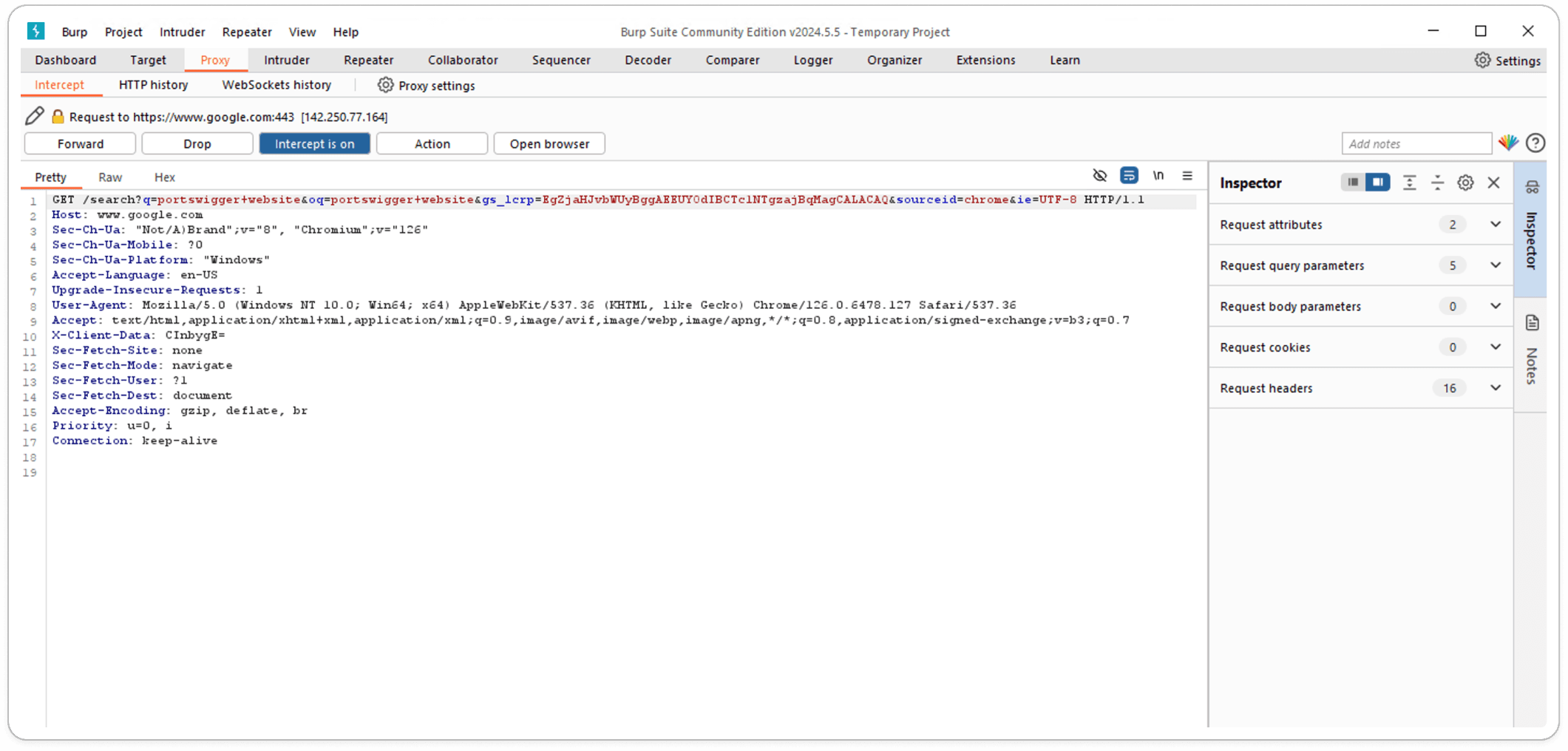Burp Suite is a comprehensive platform for security testing of web applications, offering an integrated suite of tools that work together to streamline the entire testing process. From the initial mapping and analysis of an application’s attack surface to identifying and exploiting security vulnerabilities, Burp Suite provides a seamless workflow for thorough web application security assessments.
Main Interface:

Key Components of Burp Suite:

Proxy: Allows you to intercept and modify HTTP/S requests and responses between your browser and the target application, facilitating in-depth analysis of web traffic.
Scanner: Automates the detection of common web vulnerabilities such as SQL injection and cross-site scripting (XSS), providing detailed reports on identified issues and their impact.
Intruder: Performs customizable automated attacks to identify vulnerabilities by injecting various payloads, supporting testing for authentication, session management, and data validation flaws.
Repeater: Enables manual modification and resending of HTTP requests to observe server responses with different inputs, aiding in testing and exploitation of identified vulnerabilities.
Sequencer: Analyzes the quality of randomness in session tokens and other data items, helping assess the predictability and security of token generation mechanisms.
Decoder: Provides encoding and decoding functionalities for various data formats, assisting in the analysis and manipulation of encoded information like base64, URL encoding, and more.
Comparer: Allows comparison between two sets of data, helping identify changes or differences in server responses or application behavior.
Extender: Supports extending Burp Suite’s capabilities through custom and community-developed plugins, enabling additional functionalities and integrations for specialized testing requirements.
Let's Explore Proxy:
The Proxy tool in Burp Suite is a fundamental component that serves as an intermediary between your web browser and the target web application. It captures, inspects, and modifies HTTP/S requests and responses, enabling security testers to analyze web traffic in real time.

You can use the built-in Burp Suite browser or configure your external browser to route traffic through Burp Suite by setting the proxy settings to localhost on port 8080.
Once intercept is on, visit any website in your browser. Requests will appear in the Intercept tab, allowing you to inspect and modify them before they reach the server.

Raw Data:

All captured requests and responses are logged in the HTTP History sub-tab, where you can view detailed information about each request and response, including headers, parameters, and bodies.

In this blog, I've covered some basic uses of Burp Suite, focusing on how to use the Proxy tool for intercepting HTTP/S traffic. We explored setting up the tool, enabling intercepts, and analyzing requests in real time. In future posts, we'll dive into advanced features and real-time applications of other components like the Scanner, Intruder, and Repeater. Stay tuned for a deeper exploration of Burp Suite's capabilities in web application security testing.
Happy Learning !!


